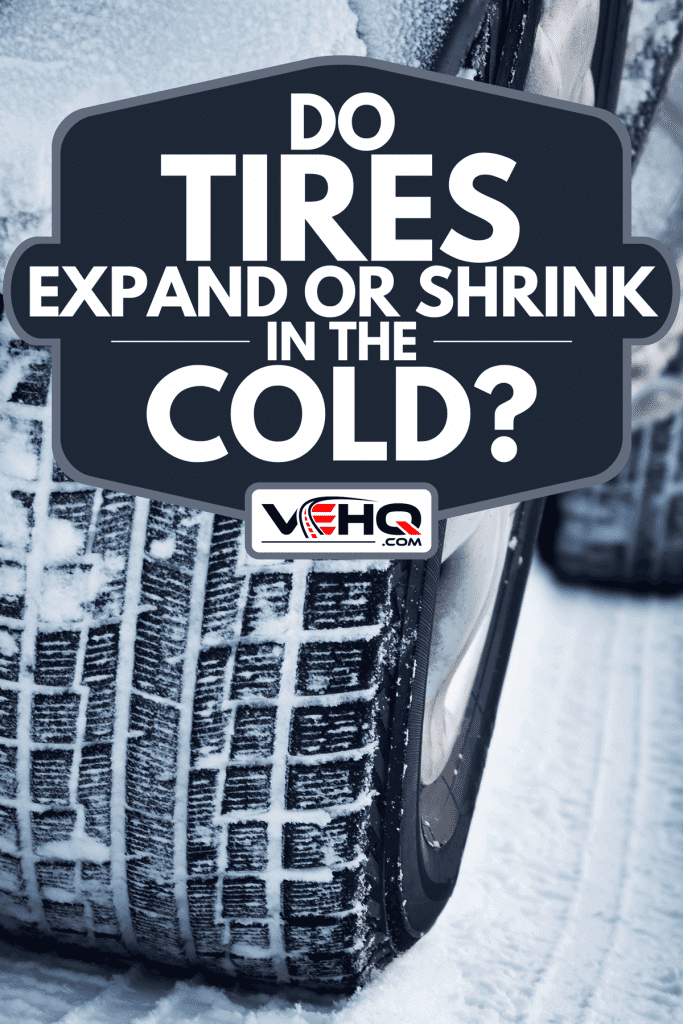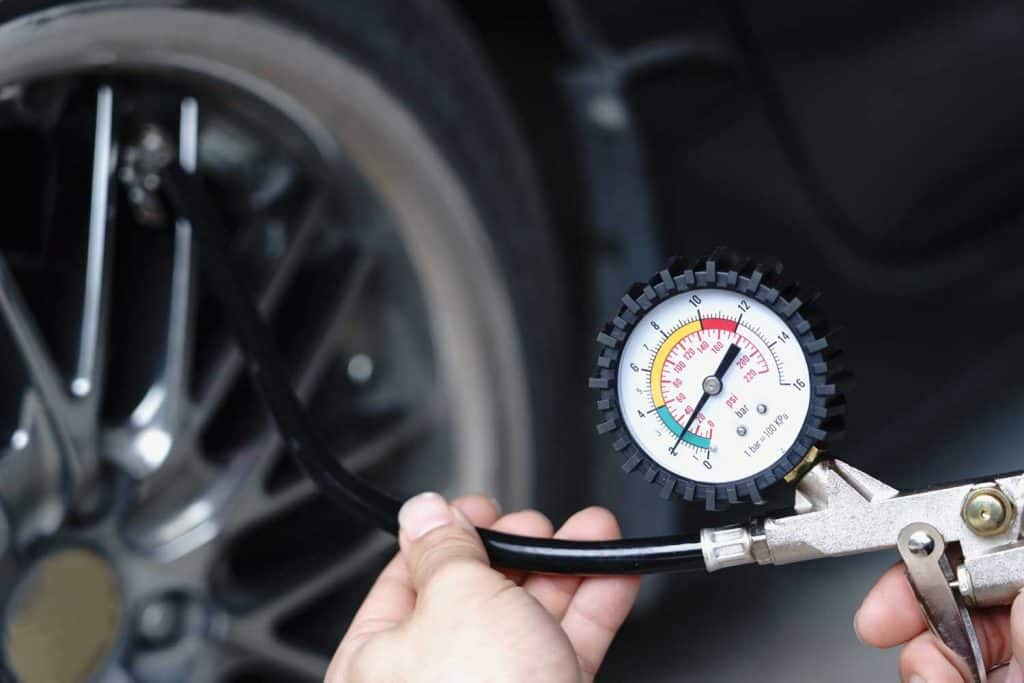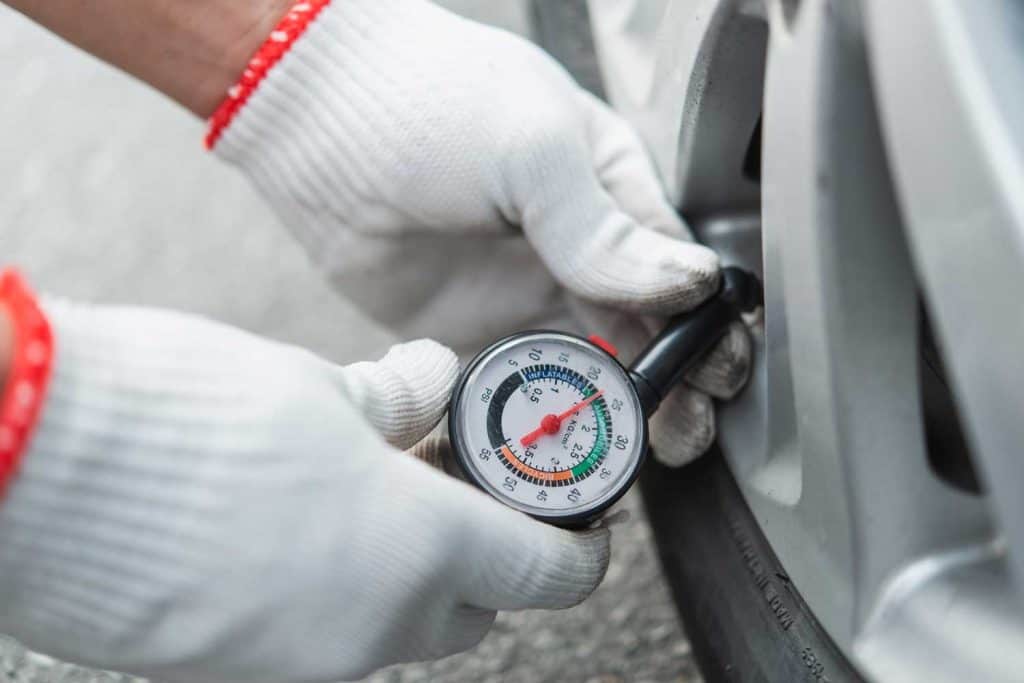It's pretty common to have your tire pressure warning light turn on during the first cold days of the year. Something with the cold affects the tires, but are they expanding or shrinking with the drop in temperature? We've researched the topic thoroughly and have the answer for you in this post.
When there is a significant drop in temperature, the air inside your tires condenses. As the air molecules become more compact, the pressure of the tire decreases. This phenomenon can give the tire the appearance of shrinking or going flat.
That's the gist of the reason why your tire pressure light comes on at the onset of cold weather, but there's more. In the rest of this post, we will discuss why tire pressure drops more in-depth. Additionally, we'll look at any risks or benefits from having low tire pressure.

Expanded Tires in the Cold
If you live in an environment where the temperature all at once turns cold on a single day in the Fall, you are probably familiar with tire pressure issues. It can be frustrating to wake up on the first cold morning only to find an illuminated tire pressure light. But what's happening with the tires, or the air inside the tires, to cause this phenomenon?

According to this article by Forbes, interior air isn't being sucked from the tire, contrary to a standard theory of why tire pressure goes down in Winter. When the outside temperature drops, the temperature of the air inside your tires does as well. The decline in temperature causes the air molecules to compress, therefore lowering the tire's air pressure.
Essentially, the accepted estimate is that for every drop of 10 degrees, the air pressure inside tires will fall by between one and two PSI, or pounds per square inch. This rate means a significant drop in temperature can indicate a severe reduction in tire pressure. Sometimes, the effects of the decrease in temperature are plainly visible to the eye because the tires can appear flat.
A decrease in tire pressure like that has real effects on your tires and your driving experience. We'll talk more about the consequences later.
Here's a video with some visual details that explain why tire pressure drops in the cold:
Should I Add More Air to my Tires at the Beginning of Winter?
If you live in an area where it doesn't get cold and your temperature drop will only last a day or so, it might not be necessary to add air to your tires. But, if you live in an area that experiences sustained cold temperatures, the opposite is true.
Because the drop in temperature can significantly decrease the pressure in your tires, you will need to add air back to them. If you fail to do so, you could experience issues with control and performance due to the low-pressure tires.
What Should Tire Pressure be in the Winter?
The best way to know what your ideal tire pressure should be is to check your vehicle's manual. The tire information can also be found on a sticker inside of the passenger door frame.
The manufacturer usually recommends a range, say between 30 and 35 PSI. In the summer, it's okay to be toward the higher end of that range. But in the winter, you'll want to stick towards the lower end to allow space for your PSI to increase a little when the tires are heated during driving.
How Much Does Tire PSI Go Up After Driving?
As you drive your car, especially on a trip longer than just around the block, the air inside the tires heats up. As you may recall, when the air inside the tire is cold, the molecules crowd together. This change in molecule behavior causes the tire pressure to go down. The opposite is true when the air in the tires becomes warm from driving.
The heat created in your tires by driving will cause the air pressure inside them to rise by one PSI every few minutes of driving. Of course, this only goes on for a few minutes. The air in the tires doesn't perpetually heat up, so the pressure doesn't forever increase.
Does Tire Pressure Go Down at Night?
You may wake up one morning with your tire pressure warning light on in a season other than Winter. Is it possible that the night air makes the pressure in tires fluctuate? If there is a significant drop in temperature overnight (like a drop of greater than 30 degrees), then the same phenomena can occur. The cooler air in the tires will compress, causing tire pressure to go down.
Can I Drive on Low Tire Pressure?
It would be best if you only drove on low tire pressure in a few situations.
The first being if your pressure is only low by one or two PSI and will be corrected by the heating of the tires during the drive. The second is if you're driving a short distance to have the tires refilled. If you attempt to drive on low-pressure tires for long periods or with extremely low pressures, the outcome might be very bad.
What is the Lowest Tire Pressure you can Drive on?

You must be extremely careful when driving on low-pressure tires. Remember, the sensor that you see on your dashboard already has a threshold of allowed low pressure before it warns you. Driving on anything beyond that level can be dangerous for you and the tires.
Since every car and tire is different and has different requirements, it's impossible to give a single PSI number on which it's safe to drive. The best way forward is to follow your manufacturer's advice and your car's warning systems. Do that, and your tires will stay in good shape.
What are the Consequences of Low Tire Pressure?
Even if driving on tires with low air pressure isn't the worst thing you can do to a car, there are still some risks. Driving around with low tire pressure will give you poor gas mileage compared to the rate you are used to with properly inflated tires. Lower MPG is hard on the wallet, but there are still worse effects.
Using your tires without the proper air pressure will cause the tires to wear out faster than usual. This increased wear puts you at risk of a blowout or loss of traction. Traction is something else that's worse with low tire pressure, regardless of how good your tread is. Factors like traction loss due to incorrect tire pressure can lead to an accident.
Does Lowering your Tire Pressure Help in Snow?
You may have heard about requirements for lowering tire pressure to drive on specific beaches. The extra tire surface area helps keep vehicles from getting stuck. Does the same thing apply to snow?
The quick answer is no; low tire pressure does not help with driving in the snow. It can make it more dangerous altogether. Snowy conditions limit control and handling as it is. There is no need to add to that risk with low-pressure tires that magnify the identical reductions in handling.
What's the Best Way to Monitor Tire Pressure?
Many new vehicles from the last few years have built-in tire pressure monitors beyond just a warning light. These monitors run based on internal systems and measuring devices within the tires; therefore, they're super accurate. But what if you have an older vehicle with no built-in tire pressure monitors?
If your car doesn't have high-tech tire pressure monitoring systems, you can check your tire pressure manually with a gauge or use a more modern solution.
There are a lot of new, real-time tire pressure monitoring systems available today. These systems allow you have the benefit of a built-in system on an older vehicle. Take a look at this from Amazon:
Click here to see the Steel Mate Wireless Tire Pressure Monitor at Amazon.
In Closing
Cold air causes the air molecules in your tires to shrink, therefore dropping the PSI of the tire. While it's not the end of the world, it can be hazardous if it goes unchecked. Keeping the correct pressure level in your tires will make them last longer. If you have any questions about your tires and their right pressure level, don't hesitate to ask around at your local auto shop.
If you found the information in this post helpful, please check out a few of our others:

